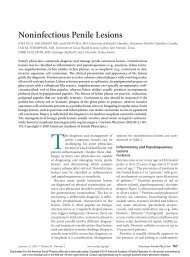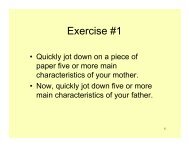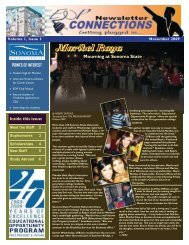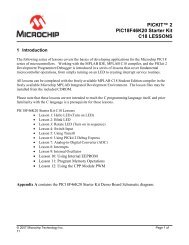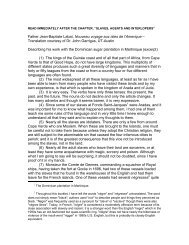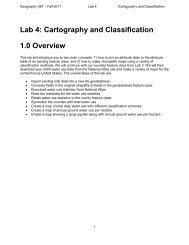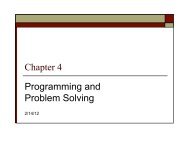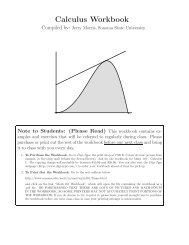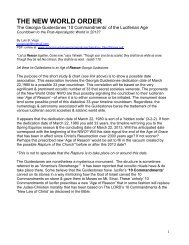Hippotherapy - Sonoma State University
Hippotherapy - Sonoma State University
Hippotherapy - Sonoma State University
You also want an ePaper? Increase the reach of your titles
YUMPU automatically turns print PDFs into web optimized ePapers that Google loves.
When she first arrives in her wheel chair, her muscles are tight and contracted due to abnormally<br />
high muscle tone in her appendages. Three quarters of the session, Jazzy faces backward on her<br />
belly, so Fran Judd (Jazzy’s pt and owner of Renaissance Healing and Learning here in Cotati)<br />
and the side-walkers, can wobble and pull Jazzy’s arms and legs to stretch them straight out while<br />
the horse continues his rhythmic, energetic walk. The last part of the session, Fran drapes Jazzy<br />
over the horse’s back, which allows her muscles to relax and creates a whole body stretch. Jazzy<br />
also receives regular physical therapy, occupational therapy, and speech therapy along with<br />
hippotherapy. Yet, both Fran and her regular physical therapist agree that better results are<br />
observed after a hippotherapy session. Jazzy’s range of motion increases and it’s much easier to<br />
stretch Jazzy’s muscles out after a hippotherapy session than it is using regular physical therapy<br />
techniques (Personal communication October 16th, 2011). However, improved balance, muscle<br />
tone, and coordination are not the only beneficial sensory input Jazzy experiences. The effects of<br />
hippotherapy run deeper than what meets the eye.<br />
The emotional, social, and cognitive impacts of hippotherapy are as rewarding as the<br />
physical benefits. The scientific evidence of the psychological benefits of hippotherapy is even<br />
harder to discern from the physical benefits. But, “it’s been clinically proven that just being in the<br />
vicinity of horses changes our brainwave patterns” (Janakievska). Without even realizing it, this<br />
environment presents children with a range of stimuli for their brain to process. Therapists engage<br />
the child through various activities using songs, games, or anything that requires attentiveness and<br />
focus. By creating tasks to focus on, it almost forces the child to concentrate and process the<br />
information asked of them. A task as simple as giving the horse direction such as “walk” or<br />
“whoa” is an effective way of achieving communication skills (Smith). Children feel a sense of



